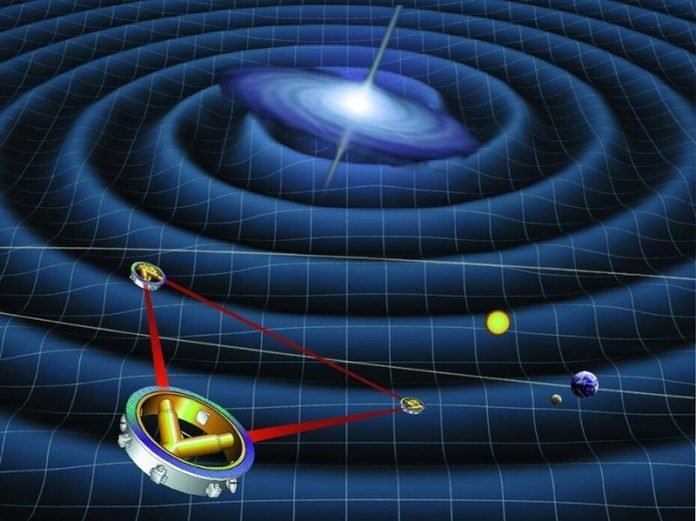
Ever since scientists started detecting gravitational waves in 2015 – basically, ripples in space-time caused by big cosmic events like black holes merging – we’ve started to understand a lot more about our universe.
Gravitational waves are like cosmic whisperings that tell us about events happening in the deepest parts of space.
So far, we’ve managed to observe several black hole mergers, but only in their very last moments when they’re shouting out their existence with super strong gravitational waves.
Now, get ready for some cool space detective work.
New scientific tools are being built that will allow us to spy on black holes for much longer periods, even years before they merge.
This is like being able to watch the full movie, not just the last few seconds!
Pippa Cole, a cool space scientist and lead author of a new study published in Nature Astronomy, explains that current measurements tell us a bit about the black holes themselves, but not much about their neighborhood – the environment where these mergers take place.
This neighborhood is fascinating as it can provide clues to another big cosmic mystery: dark matter.
So what could be in a black hole’s backyard? Well, the most famous ones have a thing called an accretion disk – a hot, spinning ring of gas that orbits around the black hole. But wait, there’s more!
A black hole could also be surrounded by a cloud of super light particles that astronomers have nicknamed a ‘gravitational atom’.
And let’s not forget about dark matter, a mysterious substance that’s believed to be all over the universe. As black holes form, they’re expected to collect dark matter, creating dense structures called spikes.
Here’s the cool part: With the new wave of experiments, scientists like Cole believe they can differentiate between all these environments!
They’ve come up with clever techniques that can help distinguish whether a black hole is surrounded by an accretion disk, a gravitational atom, a dark matter spike, or nothing at all!
Gianfranco Bertone, who’s part of Cole’s team, believes the future is bright. These new techniques will allow us to search for signs of dark matter and new types of particles in the universe, using gravitational waves.
As these cosmic whispers become louder and clearer, who knows what other secrets of the universe we’ll uncover!



